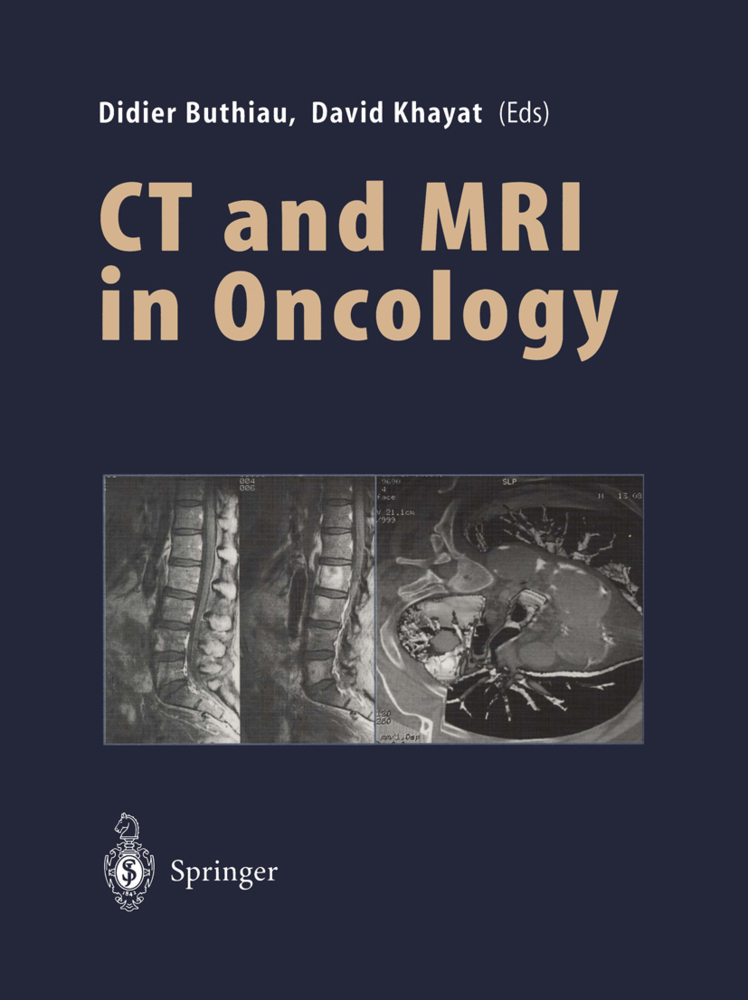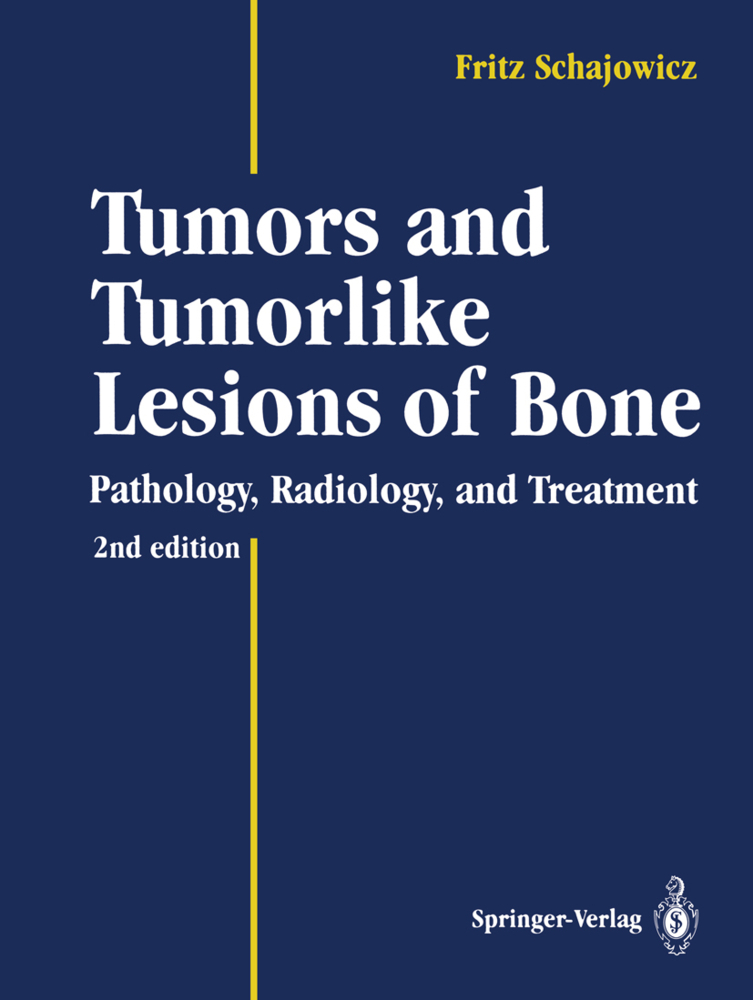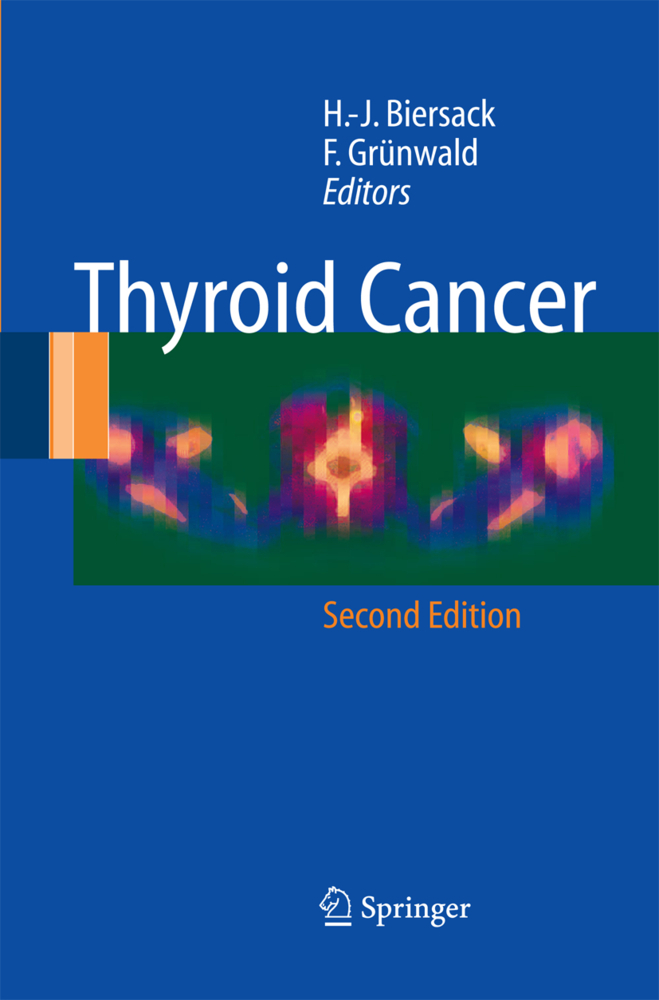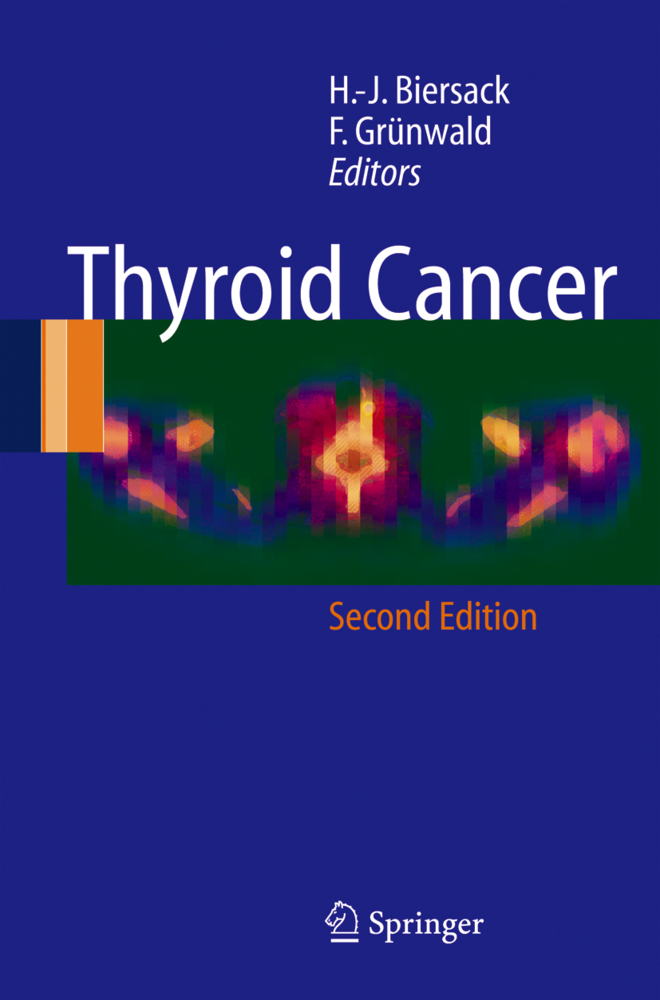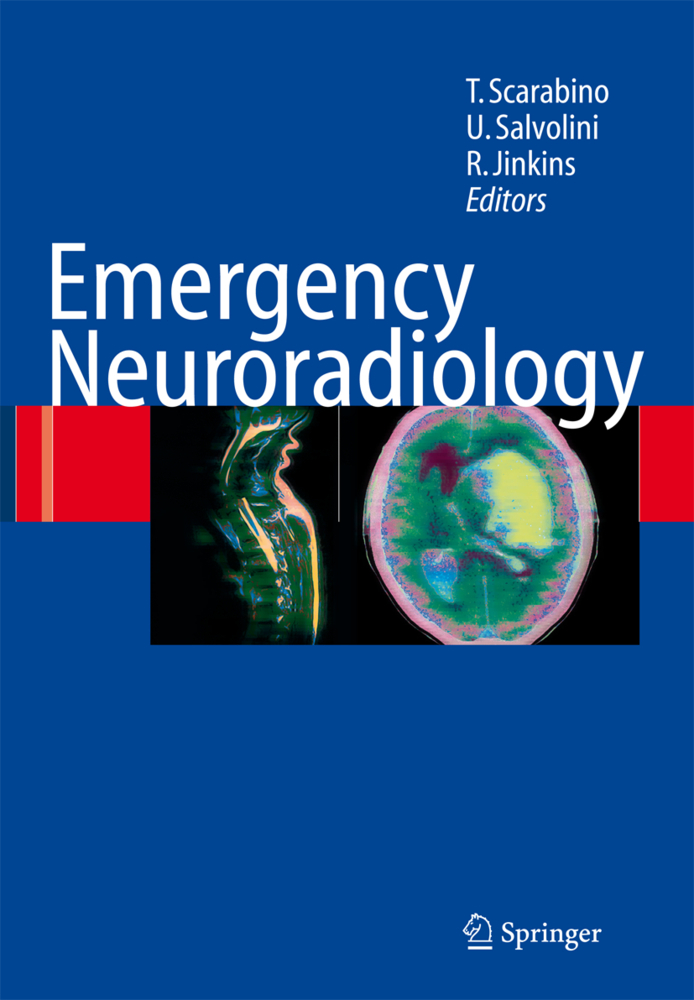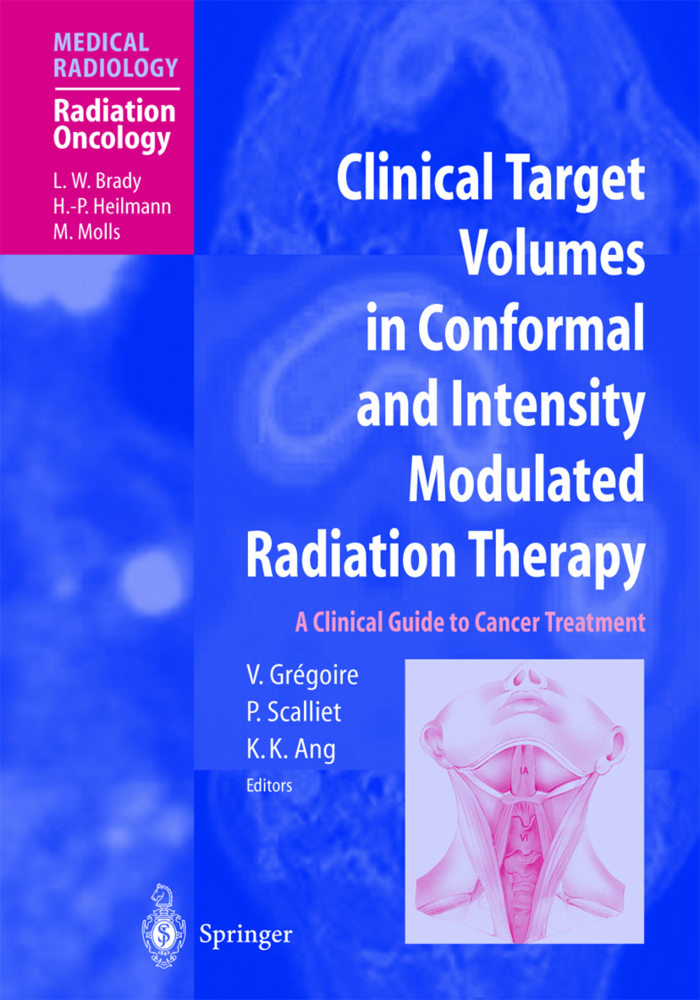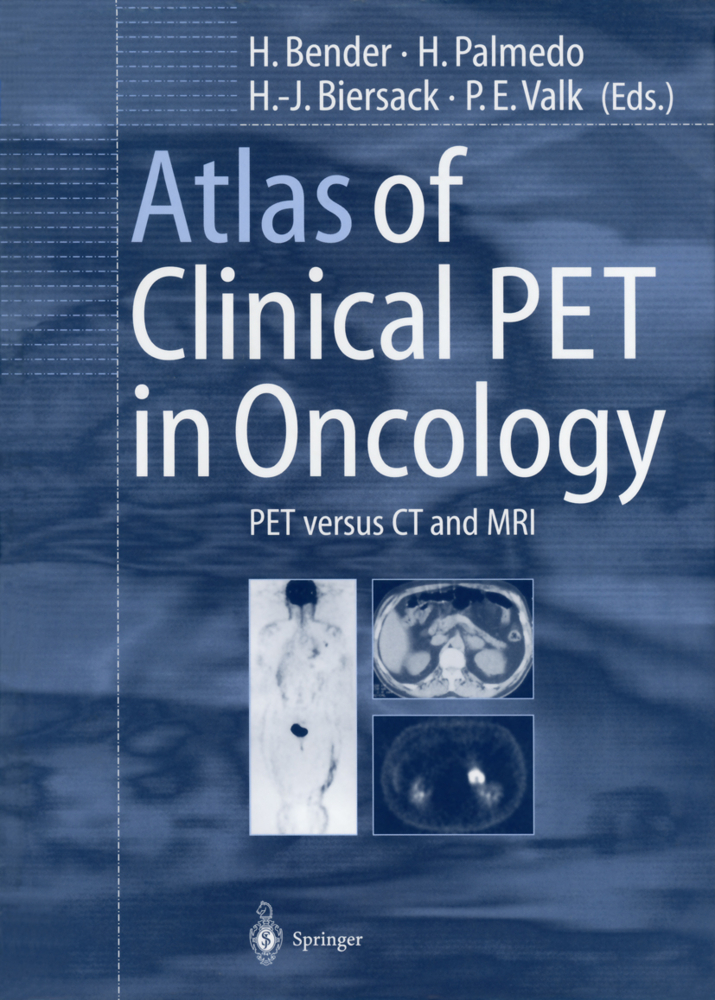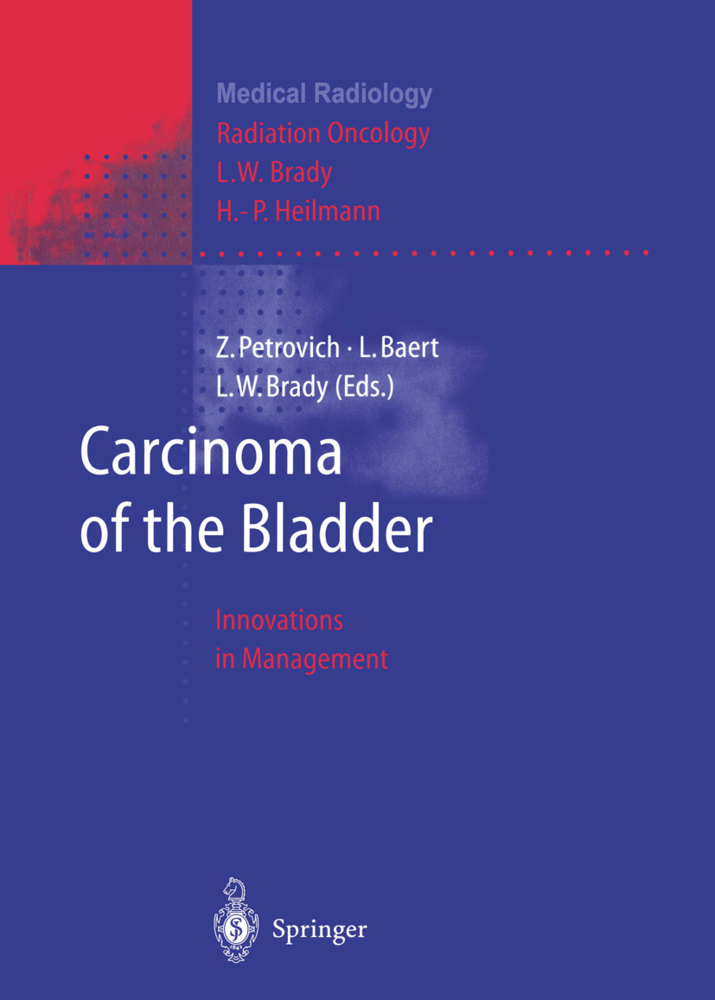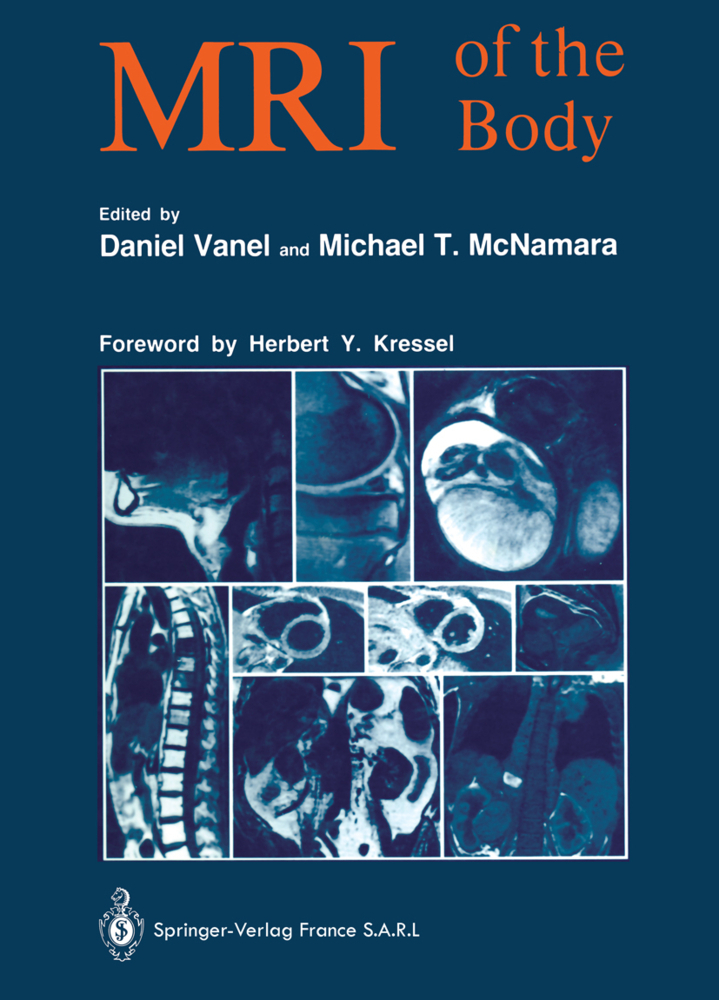CT and MRI in Oncology
CT and MRI in Oncology
Imaging techniques are often called upon in oncology in virtue of their essential role in tumor diagnosis, extension work up to various organs and detection of relapse. They are also indispensable in research and in clinical practice, allowing an objective assessment of tumoral regression in patients undergoing treatment. It is currently impossible to establish the management plan of a cancer patient or to obtain follow-up of such a patient under treatment without clinical and imaging confrontation.
CT: performance and techniques
Performance of a CT examination
Patient explanation and details
Contraindications
Patient preparation
Performance of the examination
Viewing of the images
Acquisition techniques and parameters
Scanogram or scout view
Thickness and spacing of the slices
Interstice delays
Field of view
Matrix
Filters
Continuous rotation and helical mode
Image reconstructions
MRI: performance and techniques
Performance of MRI
Types of magnet
Resistive
Superconducting
Permanent
Field strength
Coils
Types of sequence
Spin echo
Inversion recovery
Gradient echo
Opposed phase sequence (Dixon method or chemical shift)
Echoplanar imaging
Other acquisition parameters
Orientation of the scan plane
Number of acquisitions
Field of view
Acquisition matrix (NX x NY)
Slice thickness
Number of slices
Acquisition time
Gating
2 Contrast agents
Iodinated contrast agents in CT
Current data and applications in imaging
General pharmacokinetics of uro-angiographic contrast agents
Pharmacokinetics applicable to CT
Bolus injection
Injection by slow infusion
Bolus infusion
Intra-arterial injection
Other applications
Future prospects
Safety and tolerance
Iodine concentration imaging
Contrast agents in MRI
Current data and applications in imaging
Classification of MRI contrast agents
Paramagnetic agents
Superparamagnetic agents or magnetic susceptibility agents
Products containing few or no protons, such as perfluorooctylbromide
Products currently available for diagnostic clinical use
The chelates of gadolinium, markers of the extracellular space
Superparamagnetic agents
Future prospects
Tissue specific agents
Fast bolus tracking
3 Malignant intracerebral tumors
Classification of intracranial tumors
Presenting signs
Imaging of intracranial tumors: general points
CT
Findings
Differences between intra-axial and extra-axial tumors
MRI
Normal appearances
MRI contrast agents
Performance of MRI for intracranial tumors
Findings specific to MRI
Tumor localization
Supratentorial tumors
Intra-axial tumors
Gliomas
Cerebral metastases
Lymphoma
Pinealoma
Extra-axial tumors
Meningioma
Dural metastases
Congenital intracranial tumors
Tumors of the sellar region
Bony tumors
Tumors of otorhinolaryngological origin
Infratentorial tumors
Infratentorial tumors in children
Infratentorial tumors in adults
Pretreatment assessment and management
Follow-up and post-treatment appearances of intra-axial tumors
4 Tumors associated with the neurodermatoses
Neurofibromatosis
Neurofibromas
Neurinomas
Glial tumors
Hemispheric gliomas
Gliomas of the optic pathways
Meningo-encephalic gliosis
Gliomas of the spinal cord
Hamartomas
Meningiomas
Other lesions
Tuberous sclerosis of Bourneville
Intracerebral tumors
Subependymal nodules
Pigmented neurodermatoses
Basal cell nevomatoses (Gorlin's syndrome)
Angiomatous neurodermatoses
von Hippel-Lindau syndrome
Intracranial hemangioblastomas
Hemangioblastomas of the spinal cord
5 Tumors of the optic nerve, eye and orbit
Clinical signs
Techniques of investigation
Classification of orbital tumors
Orbital tumors in children
Rhabdomyosarcoma
Optic nerve glioma
Teratoma
Meningioma
Dermoid cyst
Meningoencephalocele
Retinoblastoma
Rare orbital tumors of childhood
Orbital tumors of adults.-Vascular tumors
Cavernous hemangioma
Orbital varices
Orbital arterio-venous fistulae
Rare vascular tumors
Meningeal or nerve tumors
Meningioma
Tumors of hematological origin
Tumors of the lacrymal gland
Rare primary orbital tumors
Secondary orbital tumors by direct spread
Secondary metastatic orbital tumors
6 Malignant sellar, parasellar and skull base tumors
Diagnosis of an anterior pituitary tumor
Pituitary adenomas
Diagnosis of microadenomas
Diagnosis of macroadenomas
Other lesions
Metastases
Multiple endocrine neoplasia
Lymphoma
Granulomas and infiltrative lesions
Pseudotumors and hypophyseal hyperplasia
Diagnosis of a tumor of the pituitary stalk and/or posterior pituitary
Tumors of the hypothalamo-hypophyseal axis
Primary tumors of the neurohypophysis and infundibulum
Diagnosis of a juxtasellar tumor: supra-, latero-, infra- and/or retrosellar
Lesions of the cavernous sinuses
Parasellar tumors
Craniopharyngiomas
Meningiomas of the sellar region
Meningoangiomatosis
Gliomas of the sellar region
Hypothalamic hamartomas, lipomas of the tuber cinereum, epidermoid cysts
Other parasellar tumors
Cystic lesions
Mucocele of the sphenoid sinus
Diagnosis of a skull base tumor
Assessment of extent
Assessment of etiology
Chordomas
Cartilaginous tumors
Invasive pituitary adenomas
Meningiomas
Metastases
Nasopharyngeal tumors
Benign sino-nasal tumors
Other tumors
Fibrous dysplasia
7 Malignant tumors of the spine and spinal cord
Spinal tumors
Benign vertebral tumors
Primary malignant tumors
Osteosarcoma
Chondrosarcoma
Ewing's sarcoma
Clear cell sarcomas, fibrosarcomas
Tumors of embryonic origin
Neuroblastomas
Chordomas
Sacrococcygeal teratoma
Secondaryvertebral tumors
Spinal metastases
Myeloma
Lymphoma and leukemia
Intraspinal tumors
Epidural tumors, carcinomatous epiduritis
Intradural extramedullary tumors
Meningiomas
Neurinomas
Intradural metastases or "drop metastases"
Lipomas
Other intradural extramedullary tumors
Intramedullary tumors
Ependymomas
Astrocytomas
Hemangioblastoma
Intramedullary metastases
Post-treatment appearances
8 Imaging of malignant head and neck tumors (cervico-facial)
Ultrasound
CT
MRI
9 Cancer of the pharynx and larynx
Review of anatomy
Techniques for examination of the pharyngo-larynx
CT
MRI
Cancers of the endolarynx
Pathological anatomy
Supraglottic lesions
Glottic tumors
Subglottic lesions
Lesions of the hypopharynx
10 Cancer of the oropharynx and buccal cavity
Review of anatomy
Clinical features
Oropharynx
Buccal cavity
Imaging techniques
CT
MRI
Advantages and disadvantages of the two techniques
Follow-up and detection of recurrences
11 Cancer of the nasopharynx
Review of anatomy
Clinical features
Imaging techniques
CT
MRI
12 Cancer of the paranasal sinuses
Clinical features
Carcinomas
Imaging techniques
13 Malignant tumors of the salivary glands
Clinical and anatamopathological review
Parotid gland
Submandibular glands
Accessory salivary glands
Imaging techniques
Ultrasound
Sialography
CT
MRI
14 Cancer of the thyroid and parathyroid glands
Cancer of the thyroid
Indications for CT and MRI
Signs
Cancer of the parathyroid glands
Indications for CT and MRI
Signs
15 Breast cancer
Applications of CT and MRI
CT
MRI
Signs
CT
MRI
16 Bronchopulmonary cancer
Diagnosis and pretherapeutic assessment of bronchial cancers
Indications for CTand MRI
Signs
Small-cell cancers
Other tumors
Post-therapeutic appearances
Post-operative
Post-radiotherapy
17 Pulmonary metastases
Indications for CT and MRI
CT
MRI
Signs
Pulmonary nodules
Cavitating lesions
18 Mediastinal tumors
19 Malignant tumors of the pleura,.
Focal pleural thickening
Focal fibrous tumor
Liposarcoma
Spread of a bronchial carcinoma
Diffuse pleural thickening
Malignant mesothelioma
Pleural metastases
Lymphoma
20 Malignant tumors of the chest wall
Primary tumors of the sternum and ribs
Malignant sternal tumors
Rib tumors
Soft tissue tumors
Secondary and hematological tumors
Chest wall metastases
Hematological tumors
Myeloma
Hodgkin's and non-Hodgkin's lymphoma
Chest wall invasion by an adjacent malignant lesion
Bronchial cancer
Breast cancer
Pleural tumors
Tumors of the diaphragm
21 Tumors of the trachea
CT
MRI
Specific properties of each tumor
Carcinomas
Adenomas
Other malignant tumors
Secondary tumors
Tracheal spread from an adjacent tumor
22 Tumors of the heart and great vessels
Indications for CT and MRI
Signs
Technique
CT and MRI
Heart
Great vessels
23 Tumors of the liver
Review of anatomy
Malignant hepatic tumors
Hepatic metastases
The role of imaging in the investigation of hepatic metastases
Signs
Primary cancer of the liver
Hepatocellular carcinoma
Other types of primary liver cancer
Indications and signs
Hepatic lymphoma
Future prospects of helical CT
24 Tumors of the biliary system
Cancer of the gallbladder
Indications for CT and MRI
Signs
Gallbladder metastases
Cholangiocarcinoma of the extrahepatic bile duct
Indications for CT and MRI
Signs
Cholangiocellular carcinoma
Indications forCT and MRI
Signs
25 Cancer of the esophagus
Indications for CT and MRI
CT
MRI
Signs
CT
MRI
26 Tumors of the gastrointestinal tract (excluding esophagus): cancer of the stomach, duodenum, small bowel, colon, rectum and anus
Indications for CT and MRI
CT
MRI
Other investigations
Anatomy of the digestive tract on CT
Radiological signs according to the pathology
Adenocarcinomas of the GIT
Stomach
Duodenum and small intestine
Colon and rectum
Anus
Bowel wall tumors
Lymphomas
Involvement of the GIT in other malignant hematological conditions
Kaposi's sarcoma
Connective tissue tumors
Carcinoid tumors
Mucocele of the appendix
Iatrogenic complications
27 Primary retroperitoneal tumors
Indications and signs for CT and MRI
CT
Positive diagnosis
Diagnosis of spread
Diagnosis of the nature of the tumor
MRI
28 Malignant retroperitoneal fibrosis
Indications for CT and MRI
CT
MRI
Signs
CT
MRI
29 Cancer of the pancreas
Indications and signs of CT and MRI
Ductal or canalicular adenocarcinoma
CT
MRI
Cystic tumors
Endocrine tumors
Other rare tumors
Lymphoma
Solid papillary epithelial tumor
Others
30 Cancer of the kidney
Review of anatomopathology and prognostic factors
Malignant tumors
Renal adenocarcinoma or renal cell carcinoma
Histopathology and prognostic factors
Other malignant tumors
Benign tumors
Clinical features
Imaging
Indications for CT, MRI and other imaging techniques
Intravenous urography
Abdominal ultrasound
CT
MRI
Angiography
Bone scintigraphy
Signs
Characterization of renal tumors (renal adenocarcinoma)
Tumor spread
Follow-up
Other primary tumors of the kidney
31 Malignant tumors of the adrenal glands
Hypersecretinglesions
Bilateral adrenal hypertrophy of extrapituitary origin
Malignant cortical adrenalomas
Indications for CT and MRI
Signs
Malignant pheochromocytomas
Indications for CT and MRI
Signs
Non-secreting lesions
Adrenal metastases and the diagnostic problem of differentiation from a benign non-secreting adenoma
Adrenal lymphoma
Non-secreting pheochromocytoma
Neuroblastoma
32 Cancer of the bladder
Diagnosis and staging of bladder cancers
Indications for CT and MRI
Signs
CT
MRI
Bladder involvement by other pelvic tumors
Post-treatment follow-up
Indications
Signs
CT
MRI
33 Cancer of the uterine cervix
Pre-invasive stage of cancer of the cervix
Invasive cancer of the cervix
Role of CT and MRI
Signs
Clinical investigations
Diagnostic surgical investigations
Positive diagnosis and staging
34 Cancer of the endometrium
Positive diagnosis;The importance of early detection
Diagnosis of spread
Myometrial invasion
Spread to the uterine cervix
Applications of CT and MRI
Conventional radiography
Ultrasound
CT
MRI
Signs
CT
MRI
Patient management in practice
Role of imaging in the diagnosis
Role of imaging in treatment management
35 Cancer of the ovary
Diagnosis of ovarian cancers
Applications of CT and MRI
Specific CT and MRI features of the different types of ovarian tumors
Epithelial tumors
Tumors of the mesenchyme and sexual cords
Germinal tumors
Secondary tumors of the ovary
Differential diagnosis
Value of the new techniques
Assessment and follow-up of ovarian cancers
Applications of CT and MRI
CT and MRI signs
Other methods of investigation
Investigations to be performed
36 Cancer of the prostate
Indications for CT and MRI
CT
MRI
Signs
CT
MRI
37 Testicular tumors
Indications for CT and MRI
Initial staging
Follow-up
Evaluation of residual masses post-chemotherapy
Signs
38 Hodgkin's disease and non-Hodgkin's lymphomas
Lymphoma of lymph nodes and spleen
Assessment of abdominal lymph node involvement
Diagnosis
Initial staging
Assessment of splenic involvement
CT
MRI
Assessment of mediastinal lymph node involvement
CT
MRI
Assessment of cervical and peripheral lymph node involvement
CT
MRI
Extranodal lymphomatous involvement
Assessment of lesions of the central nervous system
Intracranial lesions
Meningeal involvement
Hepatic involvement
CT
MRI
Thoracic involvement
CT
MRI
Other extranodal sites
Assessment of the therapeutic response, follow-up and detection of recurrence
Follow-up of lymphatic involvement
Residual mediastinal masses
39 Malignant melanoma
40 Investigation of metastases from an unknown primary
Diagnosis of metastatic disease
Search for the primary tumor
Cervical lymph node involvement (excluding the supraclavicular nodes)
Axillary lymph node involvement
Inguinal lymph node involvement
Supraclavicular lymph node involvement
Involvement of the midline lymph nodes (mediastinal and/or retroperitoneal)
Intrathoracic metastases
Solitary pulmonary nodule
Multiple pulmonary nodules
Lymphangitis carcinomatosa
Pleural effusion
Abdominal metastases
Hepatic metastases
Peritoneal carcinomatosis
Bone metastases
Cerebral metastases
Cutaneous metastases
41 CT and MRI in radiotherapy
CT and radiotherapy
Techniques used
Treatment assessment
Simulation
CT planning
Data acquisition
Transfer of data
Number and position of slices
Calculation of density
MRI and radiotherapy
42Interventional CT in oncology
CT guided percutaneous biopsies
Indications
Contraindications
Technique
Results
Complications
Percutaneous neurolysis of the celiac plexus and splanchnic nerves
Indications
Technique
Results
Complications
Other interventional procedures
43 Primary malignant tumors of bone and soft tissues
Primary malignant bone tumors
CT
Osteomedullary involvement
Soft tissue lesions
Pitfalls and limitations
MRI
Osteomedullary tumor spread
Soft tissue lesions
Pitfalls and limitations
Histological types
Osteosarcoma
Ewing's sarcoma
Chondrosarcoma
Miscellaneous forms: Fibrosarcoma, malignant fibrous histiocytoma, giant cell sarcoma
Chordoma
Adamantinoma
Preoperative management
In bone sarcomas of high grade malignancy
In bone sarcomas of low grade malignancy
Follow-up
CT
MRI
Strategy
Malignant tumors of the soft tissues
CT
MRI
Respective roles of the two examinations
Findings specific to histological type
Malignant fibrous histiocytoma
Liposarcoma
Synovial sarcoma (malignant synovioma)
Fibrosarcoma
Rhabdomyosarcoma
Leiomyosarcoma
Myositis ossificans circumscripta
Desmoid fibroma
Management strategy
Small volume tumors
Large subaponeurotic tumors
44 Progress in helical CT in oncology
Virtual endoscopy in oncology
Methods
Potential clinical applications
Pulmonary disease
Virtual tracheobronchial endoscopy
Endothoracic virtual imaging
ENT virtual endoscopy
Digestive virtual endoscopy
Urological virtual endoscopy
Clinical measurement of volumes with the helical scanner
Acquisition techniques
Reconstruction technique
Results
Discussion
45 Progress in MR imaging in oncology
MR angiography in oncologic patients: clinical uses.-Neoplasm of the central nervous system
Extradural tumors - Dural sinus involvement and meningiomas
Brain tumors
Glomus tumors
Lung neoplasms
Vascular involvement
Dynamic MR assessment of mediastinal lymph node involvement
Hepatic neoplasm
Characterization of hepatic lesions
CT vs MR arterial portography (CTAP vs MRAP)
Venous involvement in kidney neoplasms
Uterine masses
Musculoskeletal neoplasms
Other applications
MR cholangio-pancreatography
MR cholangiography
Artefacts and limitations
Value of MR cholangiography in cases of neoplastic pancreatico-biliary obstruction.
Introduction: Cancer, internal medicine and new imaging
1 Principles and performance of CT and MRICT: performance and techniques
Performance of a CT examination
Patient explanation and details
Contraindications
Patient preparation
Performance of the examination
Viewing of the images
Acquisition techniques and parameters
Scanogram or scout view
Thickness and spacing of the slices
Interstice delays
Field of view
Matrix
Filters
Continuous rotation and helical mode
Image reconstructions
MRI: performance and techniques
Performance of MRI
Types of magnet
Resistive
Superconducting
Permanent
Field strength
Coils
Types of sequence
Spin echo
Inversion recovery
Gradient echo
Opposed phase sequence (Dixon method or chemical shift)
Echoplanar imaging
Other acquisition parameters
Orientation of the scan plane
Number of acquisitions
Field of view
Acquisition matrix (NX x NY)
Slice thickness
Number of slices
Acquisition time
Gating
2 Contrast agents
Iodinated contrast agents in CT
Current data and applications in imaging
General pharmacokinetics of uro-angiographic contrast agents
Pharmacokinetics applicable to CT
Bolus injection
Injection by slow infusion
Bolus infusion
Intra-arterial injection
Other applications
Future prospects
Safety and tolerance
Iodine concentration imaging
Contrast agents in MRI
Current data and applications in imaging
Classification of MRI contrast agents
Paramagnetic agents
Superparamagnetic agents or magnetic susceptibility agents
Products containing few or no protons, such as perfluorooctylbromide
Products currently available for diagnostic clinical use
The chelates of gadolinium, markers of the extracellular space
Superparamagnetic agents
Future prospects
Tissue specific agents
Fast bolus tracking
3 Malignant intracerebral tumors
Classification of intracranial tumors
Presenting signs
Imaging of intracranial tumors: general points
CT
Findings
Differences between intra-axial and extra-axial tumors
MRI
Normal appearances
MRI contrast agents
Performance of MRI for intracranial tumors
Findings specific to MRI
Tumor localization
Supratentorial tumors
Intra-axial tumors
Gliomas
Cerebral metastases
Lymphoma
Pinealoma
Extra-axial tumors
Meningioma
Dural metastases
Congenital intracranial tumors
Tumors of the sellar region
Bony tumors
Tumors of otorhinolaryngological origin
Infratentorial tumors
Infratentorial tumors in children
Infratentorial tumors in adults
Pretreatment assessment and management
Follow-up and post-treatment appearances of intra-axial tumors
4 Tumors associated with the neurodermatoses
Neurofibromatosis
Neurofibromas
Neurinomas
Glial tumors
Hemispheric gliomas
Gliomas of the optic pathways
Meningo-encephalic gliosis
Gliomas of the spinal cord
Hamartomas
Meningiomas
Other lesions
Tuberous sclerosis of Bourneville
Intracerebral tumors
Subependymal nodules
Pigmented neurodermatoses
Basal cell nevomatoses (Gorlin's syndrome)
Angiomatous neurodermatoses
von Hippel-Lindau syndrome
Intracranial hemangioblastomas
Hemangioblastomas of the spinal cord
5 Tumors of the optic nerve, eye and orbit
Clinical signs
Techniques of investigation
Classification of orbital tumors
Orbital tumors in children
Rhabdomyosarcoma
Optic nerve glioma
Teratoma
Meningioma
Dermoid cyst
Meningoencephalocele
Retinoblastoma
Rare orbital tumors of childhood
Orbital tumors of adults.-Vascular tumors
Cavernous hemangioma
Orbital varices
Orbital arterio-venous fistulae
Rare vascular tumors
Meningeal or nerve tumors
Meningioma
Tumors of hematological origin
Tumors of the lacrymal gland
Rare primary orbital tumors
Secondary orbital tumors by direct spread
Secondary metastatic orbital tumors
6 Malignant sellar, parasellar and skull base tumors
Diagnosis of an anterior pituitary tumor
Pituitary adenomas
Diagnosis of microadenomas
Diagnosis of macroadenomas
Other lesions
Metastases
Multiple endocrine neoplasia
Lymphoma
Granulomas and infiltrative lesions
Pseudotumors and hypophyseal hyperplasia
Diagnosis of a tumor of the pituitary stalk and/or posterior pituitary
Tumors of the hypothalamo-hypophyseal axis
Primary tumors of the neurohypophysis and infundibulum
Diagnosis of a juxtasellar tumor: supra-, latero-, infra- and/or retrosellar
Lesions of the cavernous sinuses
Parasellar tumors
Craniopharyngiomas
Meningiomas of the sellar region
Meningoangiomatosis
Gliomas of the sellar region
Hypothalamic hamartomas, lipomas of the tuber cinereum, epidermoid cysts
Other parasellar tumors
Cystic lesions
Mucocele of the sphenoid sinus
Diagnosis of a skull base tumor
Assessment of extent
Assessment of etiology
Chordomas
Cartilaginous tumors
Invasive pituitary adenomas
Meningiomas
Metastases
Nasopharyngeal tumors
Benign sino-nasal tumors
Other tumors
Fibrous dysplasia
7 Malignant tumors of the spine and spinal cord
Spinal tumors
Benign vertebral tumors
Primary malignant tumors
Osteosarcoma
Chondrosarcoma
Ewing's sarcoma
Clear cell sarcomas, fibrosarcomas
Tumors of embryonic origin
Neuroblastomas
Chordomas
Sacrococcygeal teratoma
Secondaryvertebral tumors
Spinal metastases
Myeloma
Lymphoma and leukemia
Intraspinal tumors
Epidural tumors, carcinomatous epiduritis
Intradural extramedullary tumors
Meningiomas
Neurinomas
Intradural metastases or "drop metastases"
Lipomas
Other intradural extramedullary tumors
Intramedullary tumors
Ependymomas
Astrocytomas
Hemangioblastoma
Intramedullary metastases
Post-treatment appearances
8 Imaging of malignant head and neck tumors (cervico-facial)
Ultrasound
CT
MRI
9 Cancer of the pharynx and larynx
Review of anatomy
Techniques for examination of the pharyngo-larynx
CT
MRI
Cancers of the endolarynx
Pathological anatomy
Supraglottic lesions
Glottic tumors
Subglottic lesions
Lesions of the hypopharynx
10 Cancer of the oropharynx and buccal cavity
Review of anatomy
Clinical features
Oropharynx
Buccal cavity
Imaging techniques
CT
MRI
Advantages and disadvantages of the two techniques
Follow-up and detection of recurrences
11 Cancer of the nasopharynx
Review of anatomy
Clinical features
Imaging techniques
CT
MRI
12 Cancer of the paranasal sinuses
Clinical features
Carcinomas
Imaging techniques
13 Malignant tumors of the salivary glands
Clinical and anatamopathological review
Parotid gland
Submandibular glands
Accessory salivary glands
Imaging techniques
Ultrasound
Sialography
CT
MRI
14 Cancer of the thyroid and parathyroid glands
Cancer of the thyroid
Indications for CT and MRI
Signs
Cancer of the parathyroid glands
Indications for CT and MRI
Signs
15 Breast cancer
Applications of CT and MRI
CT
MRI
Signs
CT
MRI
16 Bronchopulmonary cancer
Diagnosis and pretherapeutic assessment of bronchial cancers
Indications for CTand MRI
Signs
Small-cell cancers
Other tumors
Post-therapeutic appearances
Post-operative
Post-radiotherapy
17 Pulmonary metastases
Indications for CT and MRI
CT
MRI
Signs
Pulmonary nodules
Cavitating lesions
18 Mediastinal tumors
19 Malignant tumors of the pleura,.
Focal pleural thickening
Focal fibrous tumor
Liposarcoma
Spread of a bronchial carcinoma
Diffuse pleural thickening
Malignant mesothelioma
Pleural metastases
Lymphoma
20 Malignant tumors of the chest wall
Primary tumors of the sternum and ribs
Malignant sternal tumors
Rib tumors
Soft tissue tumors
Secondary and hematological tumors
Chest wall metastases
Hematological tumors
Myeloma
Hodgkin's and non-Hodgkin's lymphoma
Chest wall invasion by an adjacent malignant lesion
Bronchial cancer
Breast cancer
Pleural tumors
Tumors of the diaphragm
21 Tumors of the trachea
CT
MRI
Specific properties of each tumor
Carcinomas
Adenomas
Other malignant tumors
Secondary tumors
Tracheal spread from an adjacent tumor
22 Tumors of the heart and great vessels
Indications for CT and MRI
Signs
Technique
CT and MRI
Heart
Great vessels
23 Tumors of the liver
Review of anatomy
Malignant hepatic tumors
Hepatic metastases
The role of imaging in the investigation of hepatic metastases
Signs
Primary cancer of the liver
Hepatocellular carcinoma
Other types of primary liver cancer
Indications and signs
Hepatic lymphoma
Future prospects of helical CT
24 Tumors of the biliary system
Cancer of the gallbladder
Indications for CT and MRI
Signs
Gallbladder metastases
Cholangiocarcinoma of the extrahepatic bile duct
Indications for CT and MRI
Signs
Cholangiocellular carcinoma
Indications forCT and MRI
Signs
25 Cancer of the esophagus
Indications for CT and MRI
CT
MRI
Signs
CT
MRI
26 Tumors of the gastrointestinal tract (excluding esophagus): cancer of the stomach, duodenum, small bowel, colon, rectum and anus
Indications for CT and MRI
CT
MRI
Other investigations
Anatomy of the digestive tract on CT
Radiological signs according to the pathology
Adenocarcinomas of the GIT
Stomach
Duodenum and small intestine
Colon and rectum
Anus
Bowel wall tumors
Lymphomas
Involvement of the GIT in other malignant hematological conditions
Kaposi's sarcoma
Connective tissue tumors
Carcinoid tumors
Mucocele of the appendix
Iatrogenic complications
27 Primary retroperitoneal tumors
Indications and signs for CT and MRI
CT
Positive diagnosis
Diagnosis of spread
Diagnosis of the nature of the tumor
MRI
28 Malignant retroperitoneal fibrosis
Indications for CT and MRI
CT
MRI
Signs
CT
MRI
29 Cancer of the pancreas
Indications and signs of CT and MRI
Ductal or canalicular adenocarcinoma
CT
MRI
Cystic tumors
Endocrine tumors
Other rare tumors
Lymphoma
Solid papillary epithelial tumor
Others
30 Cancer of the kidney
Review of anatomopathology and prognostic factors
Malignant tumors
Renal adenocarcinoma or renal cell carcinoma
Histopathology and prognostic factors
Other malignant tumors
Benign tumors
Clinical features
Imaging
Indications for CT, MRI and other imaging techniques
Intravenous urography
Abdominal ultrasound
CT
MRI
Angiography
Bone scintigraphy
Signs
Characterization of renal tumors (renal adenocarcinoma)
Tumor spread
Follow-up
Other primary tumors of the kidney
31 Malignant tumors of the adrenal glands
Hypersecretinglesions
Bilateral adrenal hypertrophy of extrapituitary origin
Malignant cortical adrenalomas
Indications for CT and MRI
Signs
Malignant pheochromocytomas
Indications for CT and MRI
Signs
Non-secreting lesions
Adrenal metastases and the diagnostic problem of differentiation from a benign non-secreting adenoma
Adrenal lymphoma
Non-secreting pheochromocytoma
Neuroblastoma
32 Cancer of the bladder
Diagnosis and staging of bladder cancers
Indications for CT and MRI
Signs
CT
MRI
Bladder involvement by other pelvic tumors
Post-treatment follow-up
Indications
Signs
CT
MRI
33 Cancer of the uterine cervix
Pre-invasive stage of cancer of the cervix
Invasive cancer of the cervix
Role of CT and MRI
Signs
Clinical investigations
Diagnostic surgical investigations
Positive diagnosis and staging
34 Cancer of the endometrium
Positive diagnosis;The importance of early detection
Diagnosis of spread
Myometrial invasion
Spread to the uterine cervix
Applications of CT and MRI
Conventional radiography
Ultrasound
CT
MRI
Signs
CT
MRI
Patient management in practice
Role of imaging in the diagnosis
Role of imaging in treatment management
35 Cancer of the ovary
Diagnosis of ovarian cancers
Applications of CT and MRI
Specific CT and MRI features of the different types of ovarian tumors
Epithelial tumors
Tumors of the mesenchyme and sexual cords
Germinal tumors
Secondary tumors of the ovary
Differential diagnosis
Value of the new techniques
Assessment and follow-up of ovarian cancers
Applications of CT and MRI
CT and MRI signs
Other methods of investigation
Investigations to be performed
36 Cancer of the prostate
Indications for CT and MRI
CT
MRI
Signs
CT
MRI
37 Testicular tumors
Indications for CT and MRI
Initial staging
Follow-up
Evaluation of residual masses post-chemotherapy
Signs
38 Hodgkin's disease and non-Hodgkin's lymphomas
Lymphoma of lymph nodes and spleen
Assessment of abdominal lymph node involvement
Diagnosis
Initial staging
Assessment of splenic involvement
CT
MRI
Assessment of mediastinal lymph node involvement
CT
MRI
Assessment of cervical and peripheral lymph node involvement
CT
MRI
Extranodal lymphomatous involvement
Assessment of lesions of the central nervous system
Intracranial lesions
Meningeal involvement
Hepatic involvement
CT
MRI
Thoracic involvement
CT
MRI
Other extranodal sites
Assessment of the therapeutic response, follow-up and detection of recurrence
Follow-up of lymphatic involvement
Residual mediastinal masses
39 Malignant melanoma
40 Investigation of metastases from an unknown primary
Diagnosis of metastatic disease
Search for the primary tumor
Cervical lymph node involvement (excluding the supraclavicular nodes)
Axillary lymph node involvement
Inguinal lymph node involvement
Supraclavicular lymph node involvement
Involvement of the midline lymph nodes (mediastinal and/or retroperitoneal)
Intrathoracic metastases
Solitary pulmonary nodule
Multiple pulmonary nodules
Lymphangitis carcinomatosa
Pleural effusion
Abdominal metastases
Hepatic metastases
Peritoneal carcinomatosis
Bone metastases
Cerebral metastases
Cutaneous metastases
41 CT and MRI in radiotherapy
CT and radiotherapy
Techniques used
Treatment assessment
Simulation
CT planning
Data acquisition
Transfer of data
Number and position of slices
Calculation of density
MRI and radiotherapy
42Interventional CT in oncology
CT guided percutaneous biopsies
Indications
Contraindications
Technique
Results
Complications
Percutaneous neurolysis of the celiac plexus and splanchnic nerves
Indications
Technique
Results
Complications
Other interventional procedures
43 Primary malignant tumors of bone and soft tissues
Primary malignant bone tumors
CT
Osteomedullary involvement
Soft tissue lesions
Pitfalls and limitations
MRI
Osteomedullary tumor spread
Soft tissue lesions
Pitfalls and limitations
Histological types
Osteosarcoma
Ewing's sarcoma
Chondrosarcoma
Miscellaneous forms: Fibrosarcoma, malignant fibrous histiocytoma, giant cell sarcoma
Chordoma
Adamantinoma
Preoperative management
In bone sarcomas of high grade malignancy
In bone sarcomas of low grade malignancy
Follow-up
CT
MRI
Strategy
Malignant tumors of the soft tissues
CT
MRI
Respective roles of the two examinations
Findings specific to histological type
Malignant fibrous histiocytoma
Liposarcoma
Synovial sarcoma (malignant synovioma)
Fibrosarcoma
Rhabdomyosarcoma
Leiomyosarcoma
Myositis ossificans circumscripta
Desmoid fibroma
Management strategy
Small volume tumors
Large subaponeurotic tumors
44 Progress in helical CT in oncology
Virtual endoscopy in oncology
Methods
Potential clinical applications
Pulmonary disease
Virtual tracheobronchial endoscopy
Endothoracic virtual imaging
ENT virtual endoscopy
Digestive virtual endoscopy
Urological virtual endoscopy
Clinical measurement of volumes with the helical scanner
Acquisition techniques
Reconstruction technique
Results
Discussion
45 Progress in MR imaging in oncology
MR angiography in oncologic patients: clinical uses.-Neoplasm of the central nervous system
Extradural tumors - Dural sinus involvement and meningiomas
Brain tumors
Glomus tumors
Lung neoplasms
Vascular involvement
Dynamic MR assessment of mediastinal lymph node involvement
Hepatic neoplasm
Characterization of hepatic lesions
CT vs MR arterial portography (CTAP vs MRAP)
Venous involvement in kidney neoplasms
Uterine masses
Musculoskeletal neoplasms
Other applications
MR cholangio-pancreatography
MR cholangiography
Artefacts and limitations
Value of MR cholangiography in cases of neoplastic pancreatico-biliary obstruction.
Buthiau, Didier
Khayat, David
Holland, J. F.
Buthiau, S.
| ISBN | 978-3-642-46844-5 |
|---|---|
| Artikelnummer | 9783642468445 |
| Medientyp | Buch |
| Auflage | Softcover reprint of the original 1st ed. 1998 |
| Copyrightjahr | 2012 |
| Verlag | Springer, Berlin |
| Umfang | XXXIII, 413 Seiten |
| Abbildungen | XXXIII, 413 p. |
| Sprache | Englisch |

